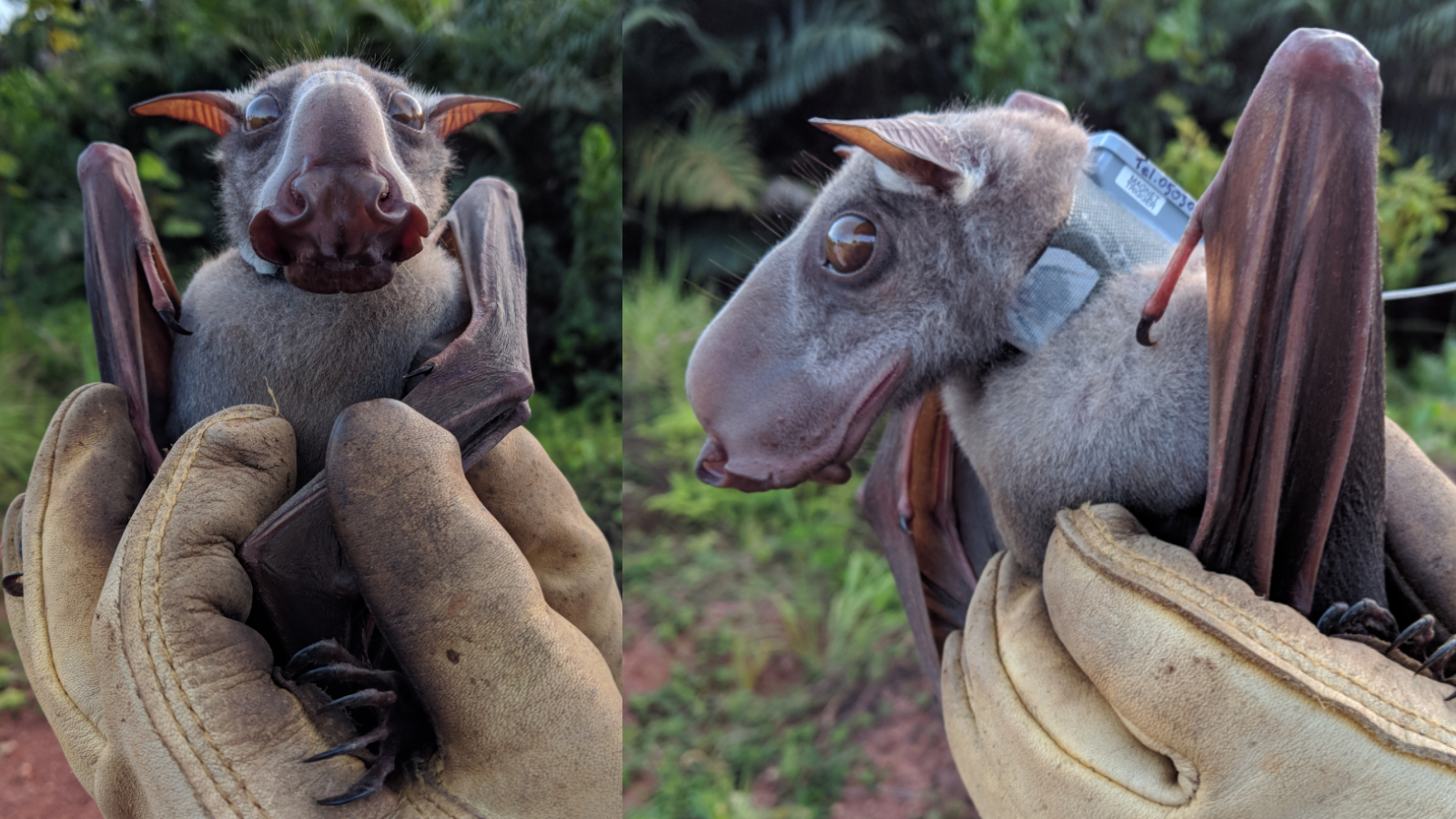
Name: Hammer-headed bat (Hypsignathus monstrosus)
Where it lives: Lowland forests of West and Central Africa
What it eats: Fruit — including figs, bananas, guavas and mangoes — and flies
Why it's awesome: These "megabats" are the largest in continental Africa. Hammer-headed bats are named after the males' oddly elongated, boxy heads, which contain a large resonating chamber that amplifies their calls. This bizarre head is the product of the bats' unusual mating system.
Hammer-headed bats are among the few bat species with a lek courtship system — a kind of pageant where up to 150 males gather twice a year to impress females with loud honks and a wing-flapping display.
We went to check out a spot that locals had told us bats gather at night. Turns out it was a hammer-headed bat lek! pic.twitter.com/18juGmlliVJanuary 14, 2022
Males hang from riverside trees and honk for hours at a time, while females fly by selecting a suitable mate. Females are highly picky, choosing the same 6% of males as mates 79% of the time (meaning the other 94% of males only get lucky once in a blue moon). The loudest honks usually get the most attention, so males have evolved a voice box, or larynx, that takes up around half their body cavity.
Their larynx is so large it pushes the heart, lungs and intestines back and sideways, according to a 1990 study.
Related: Honduran white bats — The fluffy little bats that roost together in leaf tents
The males' calls echo inside their thorax and bizarre, gargoyle-like heads before projecting out through their flared nostrils and pendulous lips. This elaborate head likely inspired the hammer-headed bat's Latin species name "monstrosus," which translates to "monstrous."
Females don't need big heads to impress a mate, so they sport narrower fox-like muzzles instead. Their bodies are also smaller, weighing about half as much as males — 0.5 pound (230 grams) compared with 0.9 pound (420 g) — and measuring around 8 inches (20 centimeters) long, compared with up to 11 inches (28 cm) for males.
However, both males and females have about a 3.3-foot (1 meter) wingspan and smooth, grayish-brown fur.
Although they are frugivorous, meaning they eat fruit, hammer-headed bats are thought to occasionally turn carnivorous. A 1968 study reported observations of these bats feeding on scraps of bird meat and killing chickens to drink their blood in Gabon. The observer, a herpetological collector named Harry Andrew Beatty, twice rescued chickens that were "attacked late at night by Hypsignathus," according to the study.
Another fun fact about hammer-headed bats? They wrap their huge wings around their humped noses to go to sleep.







